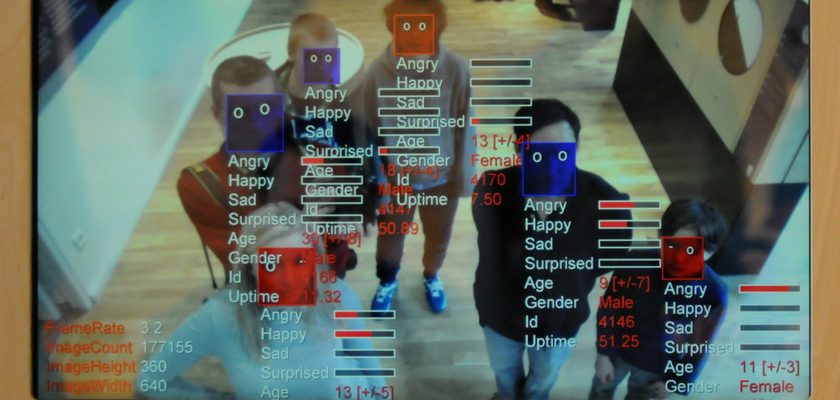 By Carey Wedler
By Carey Wedler
Amid the highly-publicized spate of mass shootings in America, one public school district is set to impose unprecedented police state tactics to ensure “security” and safety for students.
Starting next school year, schools in New York’s Lockport district will be equipped not only with bulletproof glass and surveillance cameras but also with facial recognition technology used by police forces and military units.
“We always have to be on our guard. We can’t let our guard down,” Lockport Superintendent Michelle T. Bradley told Syracuse.com. “That’s the world that we’re living in. Times have changed. For the Board of Education and the Lockport City School District, this is the No. 1 priority: school security.”
“When it comes to safety and security, we want to have the best possible,” Depew Superintendent Jeffrey R. Rabey said. “From what I’ve seen, there’s no other like it.” The Depew school system is also working to obtain the same Aegis system, supplied by the Canadian company SN Technologies. It is part of the school district’s $2.75 million push for security, which includes 300 digital cameras.
According to Tony Olivo, an Orchard Park security consultant who helped develop the system, Lockport schools will be the first in the world to use the facial recognition technology, though other schools in the U.S. do employ other kinds of facial recognition. He noted that “Scotland Yard, Interpol, the Paris police and the French Ministry of Defense” already use it.
Olivo also said Lockport schools were used in test videos the Aegis software developers used as they created the technology. The district has been eyeing the technology since the 2012 Sandy Hook shooting and is paying for it with funds secured with New York state’s Smart Schools Bond Act of 2014.
Though school officials are enthusiastic about the new additions, facial recognition technology has a questionable track record.
Documents recently obtained by Wired magazine showed that during a sports events where South Wales police used facial recognition tactics, “2,297 [matches] turned out to be false positives and 173 were correctly identified – 92 per cent of matches were incorrect.”
Olivo claims the Aegis system has improved technology and simply needs numerous cameras to be strategically placed around the school. K.C. Flynn, a partner in SN Technology, says “We have absolute confidence in our product. It does work, and we have no concerns whatsoever.”
Nevertheless, the system does not use X-ray technology, nor does it detect metal, concealed weapons, or explosives, though Olivo claims the video software may be able to identify some weapons. Syracuse.com notes it “alert[s] officials if someone whose photo has been programmed into the system — a registered sex offender, wanted criminal, non-custodial parent, expelled student or disgruntled former employee — comes into range of one of the 300 high-resolution digital cameras.”
At least one parent is skeptical. Jim Schulz told the outlet he thinks the system will only save a few seconds at best and will be unable to stop a perpetrator with an AR-15. Adding that keeping doors locks and using a visitor check-in system would be just as effective, he said: “The only alarm you’re going to need, if you need any, is the people screaming.”
Lockport technology director Robert LiPuma acknowledged that Aegis cannot stop shootings on its own:
It takes a human response, still, to respond to that. There’s no security system or piece of technology that’s going to prevent something from happening. It’s just giving us more information and alerting us to issues.
That information has civil liberties advocates concerned. Though students’ photos will not be uploaded to the system “unless there is a reason,” the system can then track that student’s movements around the school, tracing who they interacted with and where they went during school hours over the previous 60 days.
“Tracking every move of students and teachers is not the best way to make them feel safe at school and can expose them to new risks, especially for students of color who are already over-policed in the classroom,” said the John Curr, who chairs the New York Civil Liberties Union’s Buffalo chapter. Facial recognition technology is most effective on white people and less accurate in correctly identifying minorities.
Curr also commented on the dangerous precedent of extreme surveillance the Lockport school district is now setting:
This plan sets a dangerous precedent for constant surveillance of young people and risks exposing data collected about students and educators to misuse by outsiders or law enforcement.
Further, Olivo has been accused of a conflict of interest because his firm, Corporate Screening and Investigative Group, is one of SN Technology’s partner firms. He and school district officials deny any wrongdoing, arguing that Olivo does not receive a commission and that SN does not have a direct contract with the district. Rather, they are a subcontractor with a local firm.
Regardless of the alleged conflict of interest — and the questionable effectiveness of the invasive technology — the adoption of the Aegis system appears to be just the latest in the trend of policing schools. In an age of overwhelming fear about potential school shootings — and despite the advice of experts — educational institutions increasingly resemble prisons, and students are increasingly treated like potential criminals.

